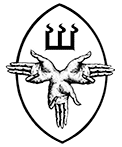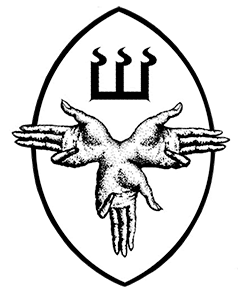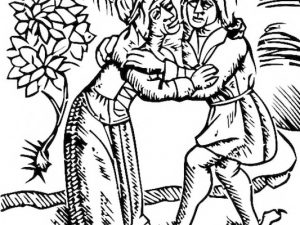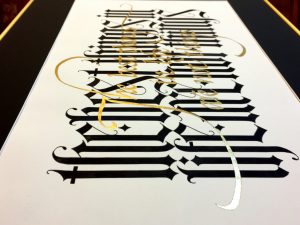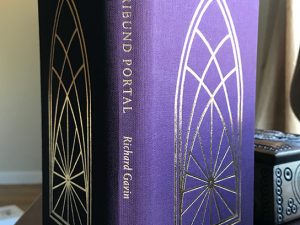An Interview with Júlia Carreras-Tort
The rugged, desolate Pyrenees Mountains of Southwestern Europe served as the ancient cradle of the Bruxa, a primordial witch-figure. Neglected in English scholarship, this supernatural being is the subject of the new book from Three Hands Press, Land of the Goat. In August 2024, Three Hands Press was privileged to speak with its author, Júlia Carreras Tort, and discuss some of the aspects of the Bruxa and its magical resonance with the roughhewn alpine lands of its origin.
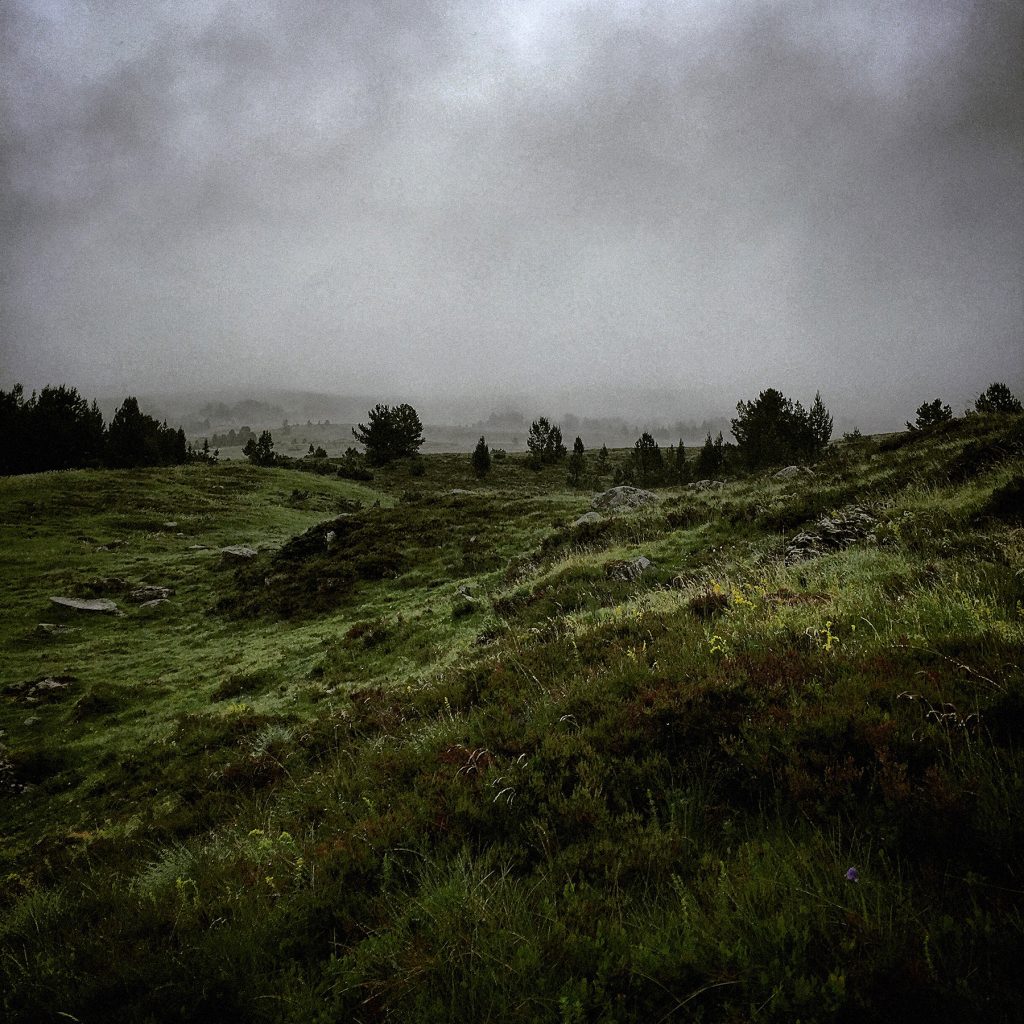
Pla de Beret, Bruxes’ gathering plateau, and Hellmouth (Catalan Pyrenees). Courtesy the Author.
Q. Your new book Land of the Goat explores the contours of witchcraft in the Pyrenees, in particular the Bruxa. What features are unique to this entity, and how does it differ from other European witch-phenotypes?
In origin, the Pyrenean Bruxa does not differ as much as one might think from other entities like the classical Strix or Lamia, or the Eastern European Stryzga or Strigoi. However, unlike other nocturnal entities, the Pyrenean Bruxa was instrumentalized by civil and political powers in the 15th century, humanized, and systematically prosecuted by local authorities. The Bruxa became a scapegoat and one of the most visible victims of the generalized paradigm shift that accompanied the onset of Modernity. As a result, the Pyrenean Bruxa was temporarily dispossessed of its own power and presence.
Q. When considering the typology of the Pyrenean Bruxa, one is struck by its stark divergence from the representation of witches in modern art, literature, religion and popular occultism. For example, the Bruxa’s status as a non-human entity, having non- human characteristics and behaviors. In your book you have referred to this figure as the ‘primordial witch’. To what extent has the Bruxa retained its ancient power, despite the imposition of humanity?
The Bruxa has not retained its ancient power in isolation, but in relation to the land and the realities of the mountain territories. The Bruxa existed before the witch craze and before modernity because it is, in the end, the primordial Other. The folktale Bruxa has no shadow, sheds no tears, and is compelled to count the small hairs on the carline thistle. The Bruxa washes clothes and leaves them to dry in the sun—these behaviors demonstrate that it is not human but something other than human, for the Bruxa is one of the many manifestations of the Spirit- Double. While the modern witch is deeply influenced by the prosecutions of heresy and sorcery, the Bruxa roams the land in desolate spaces; she is the embodiment of the hedge, a liminal space that both unites and separates ordinary reality and otherworldly realms.
Q. Are there peculiar features of the landscapes of the Pyrenees that contributed to the development of witchcraft belief and practice there?
The Pyrenean Bruxa, and all the beliefs that accompany it, are undoubtedly shaped by its surroundings, just as human beings are interpellated by the Land. The complex mountain terrain creates boundaries while simultaneously facilitating connections between certain territories and cultural discourses. Ideas, laws, and tendencies flow in a particular manner due to that same terrain. The human communities that believed in the Bruxa did so until relatively recently, as the folklore remained largely untouched due to a widely perceived sense of isolation. Even the weather has significantly impacted the local concept of witchcraft, with Bruxes being considered the bringers of hailstorms in some areas of the Pyrenees, hence the use of terms like bruixonada or calabruix to refer to hail.
Q. Aside from medieval clerical and legal records and their academic study, what other contexts have preserved Pyrenean witchcraft to the present day?
Apotropaic measures, such as placing certain amulets (like the carline thistle, claws of birds of prey, rosehip, and hawthorn crosses on doors), are still preserved in some Pyrenean regions as protection against Bruxes. There is an abundance of folktales in which those who are not afraid of Bruxes, or ‘those who wander by night,’ are punished for their lack of faith. Taboos surrounding specific locations are still maintained through toponymy: there are many witches’ plateaus and plains, forbidden mountains and lakes, such as the example of the iron crosses placed on mountains like the Canigó, or the sanctification of Pla de Beret through the construction of the Montgarri Sanctuary in the Catalan Pyrenees.
Q. In the context of Pyrenean witchcraft traditions, what is the significance of the goat?
The goat is not only the Master of the Sabbat, but it also encapsulates a rural aspect as an agrarian, probably pre-Christian, deity. The Pyrenees witnessed the formation of the concept of the Land of the Goat as a bewitched location, a space in between where the Sabbat takes place. This in-between space belongs to the goat, not necessarily as an evil entity, but certainly because of its off-limits character. The Pyrenean goat deity, called Aherbelste, was formerly worshipped in the valley of Arboust (French Pyrenees). Black billy goats have a specific role in Pyrenean folklore, embodying the fertility and chthonic aspects of the land. Even though the links between Aherbelste and the Basque mythical Akerbeltz (meaning ‘black billy goat’) have not been confirmed, black billy goats are known in Pyrenean folklore as protectors against the evil eye, with black animals serving as deflectors of evil. The goat is the Pyrenean liminal animal par excellence, guarding the wildest side of the Land and its dwellers.
Q. How are local traditions of witchcraft and the figure of the bruxa viewed by modern people living in the Pyrenees?
The current population in Pyrenean territories has been heavily influenced by the witch trials that took place in the area, and they often conceive of the witch as a human victim of persecution. However, their concept of the Bruxa fluctuates between the wrongfully accused person and a supernatural entity. Most of the elderly people I had the pleasure to interview made it very clear that the Bruxa is something they must live with. Even though they attempt to make sense of the discursive contradictions they have experienced, they often end up attributing most misfortunes (such as those involving cattle, harvests, weather, and child mortality) to the Bruxa.
Q. In gathering the research for your book, what were some of the challenges encountered when interviewing local people?
Instead of viewing my experience as facing challenges, I would describe it as encountering idiosyncrasies that enriched my understanding of the ethos of modern Pyrenean communities and their relationship with the Bruxa. To delve into such a complex topic, earning the interviewees’ trust is essential to ensure they do not feel judged. Building genuine relationships and comprehending the social complexities of the regions under study are crucial for fully grasping the context of their experiences. Their testimonies not only provided valuable insights but also prompted me to reevaluate my own experiences on the subject.
Q. Is there evidence that features of Pyrenean witchcraft appeared beyond the region of the Pyrenees, for example in Europe or Colonial Spain or non-Pyrenean France?
It has often been stated that witchcraft is an endemic phenomenon in the mountains but becomes epidemic in the cities. Although many of the beliefs surrounding the pre-witch craze Bruxa are now lost, with only the concept of the witch-hunt remaining, the word Bruxa itself is, in fact, the most significant legacy acknowledged by other regions. The Pyrenean term Bruxa eventually evolved into the Spanish bruja, the Portuguese bruxa, and the now-extinct French brouxe. It is now time to retrace our steps and understand the full implications contained within it.
In my book, I delve into some of these implications by examining how its evolution reveals deep-rooted cultural exchanges and shared anxieties about the supernatural across the region. I explore the Bruxa’s transformation from a non-human, elemental force associated with the Pyrenean landscape to a figure integrated into broader European witchcraft traditions. My research highlights how this transformation reflects wider social, religious, and political changes, such as the widespread shifts in symbolic order. I hope that my work will encourage a renewed and rigorous focus on the study of local witchcraft traditions, moving away from humanized representations, and inspire further research into how these traditions continue to offer connections between our imagination, the Land, and its spirits.
